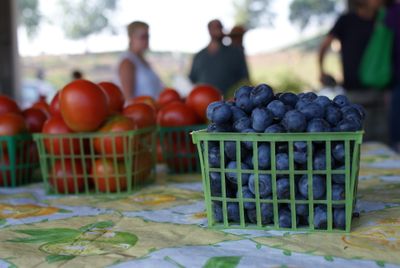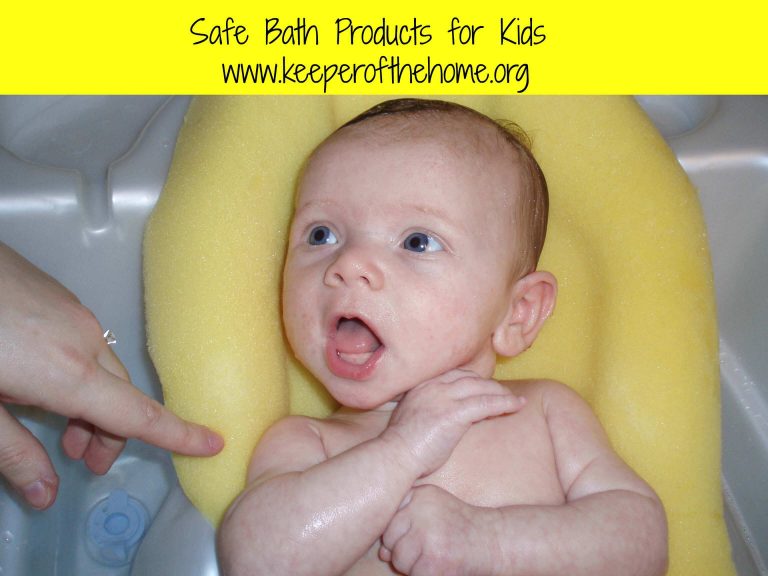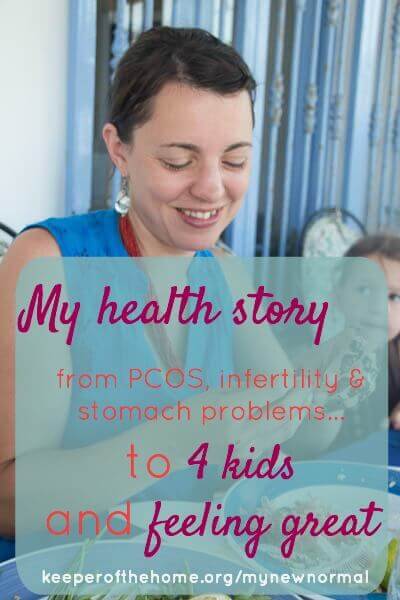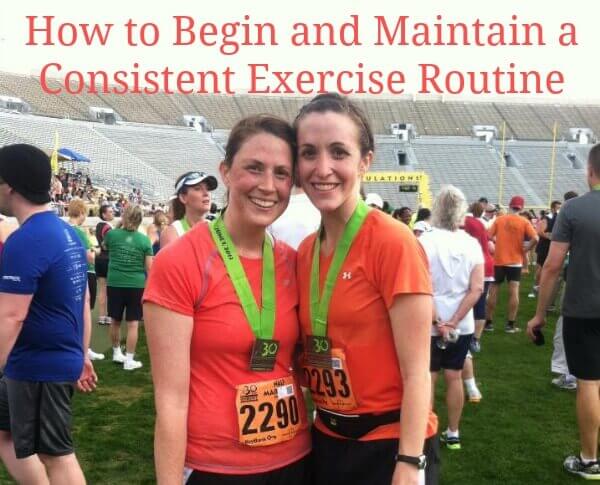The Great Debate- Washing our Fruits & Vegetables

The debate isn’t over whether we should actually wash our fruits and vegetables or not. Most people and “experts” agree, all produce should be washed before being eaten.
What is hotly debated, however, is why and with what. Some say we don’t need to worry about pesticide residues, but only food-borne bacteria, and therefore rinsing in water is good enough. Others says that pesticide residue is a very real concern and we need to use specially formulated, organic (usually expensive) produce washes.
So who’s right?
The articles out there say that the Government has performed tests (who’s results are hard to find, by the way) showing that the amount of pesticide residues are very small, and that the trace amounts left behind are not harmful. However, these “trace amounts” have not been thoroughly tested and approved as being safe, nor has the cumulative effect of consuming trace amounts of numerous different pesticides over the long term been studied.
Many people will point out that the use of pesticides is becoming stricter, and that they are removing those considered dangerous. However, they are also adding new pesticides every year, and I think many of us would be surprised to find out how many and what types of chemicals are still ending up on our dinner tables. Here is a link to a chart detailing the chemical use on lettuce crops in California and Arizona in 2002- I do not think that this is extremely dissimilar from any other states or Canada, or that the list has changed much today.
There is somewhat of a difference between food crops, though, and this can help us to make wise decisions regarding what we buy (read a previous post of mine on this topic).
Personally, I am hesitant to believe the claim that the remaining pesticide residues are safe. Most things approved by the FDA have not gone through the rigorous studies that I believe are necessary to warrant them as being “safe”, and more than that, they have not been studied in combination with other chemicals (because most chemicals have reactions or synergistic effects when mixed with other chemicals- meaning that they can become more potent or toxic together than on their own).
I do know that studies are coming out left, right and center showing increased rates of many types of cancers and other serious illnesses in the farmers and workers using these chemicals, and in the families whose nearby homes are affected by the crop sprays that travel through the air.
So how can we thoroughly wash our fruits and vegetables to avoid as many of these contaminants as possible?
There are many different thoughts on what is most effective. Unfortunately, most pesticide residues actually become absorbed by the produce, and become systemic and not capable of being washed off. However, there are still many residues that reside on the outer layer of produce, that can be removed as much as is possible by careful washing.
Here are a few general guidelines:
- Wash everything- regardless of what the item is, it is wise to at least briefly wash it, simply because it has been handled, has traveled, etc. and to simply reduce the risk of bacteria.
- Whenever possible, peel the skin from non-organic produce, such as apples, potatoes, carrots, zucchini, etc. If produce is organic, a simple wash with a good scrub brush should be sufficient, and allow you to keep the peels on, which contain a high level of nutrients.
- In root vegetables, most pesticides are concentrated around the top inch of the vegetable, so be sure to chop this area off. Whenever I use non-organic carrots, I also chop off more on the top that I do with organic.
- Foods that cannot be scrubbed or peeled (such as broccoli, berries, etc.) should be soaked in a sinkful of water and your choice of washing agent, before being thoroughly rinsed.
- Discard the outer leaves of leafy vegetables, like lettuce, before you thoroughly wash the inner leaves.
As far as what to use, opinions on this vary widely. It is very hard to wade through all of the different claims and arguments and decipher what is truly best. However, it seems that the best cleansers are those that contain some type of mild, natural surfactant, which basically helps to dissolve and wash away residues (please note, I don’t claim to understand this very fully- there is a lot of science behind surfactants and soaps and detergents, etc. and hey, I’m just not a science-y kind of girl!).
Here is a list of safe and effective washes or make-your-own solutions that I know of:
Vinegar and Hydrogen Peroxide
The; basic method is to fill two spray bottles, one with vinegar and one with hydrogen peroxide (3%, the kind you can buy in the drug store). Spray the produce first with vinegar, and then with the peroxide, and allow to sit for a moment (scrubbing those items that need to be scrubbed), then rinse well under running water.
Vinegar and water
Another method I have heard of is to use equal parts vinegar and water and allow the vegetables to soak in it (scrubbing if necessary), before rinsing well.
Mild dish washing detergent
Use 1 tsp of detergent per gallon (4 litres) of water. Again, soak, scrub, rinse. Personally, I would only do; this with a more natural detergent, rather than a regular commercial one.
Use a pre-made produce wash such as:
Biokleen Produce Wash
Mom’s Veggieswash. Nature Clean Produce Wash
There are many others out there. I’ve also heard that Shaklee and Amway make good washes.
What is the deal with these washes? They are generally made with non-toxic surfactants that help to break down and remove residues so that they can be rinsed off. They are usually quite mild, non-irritating, no dyes, biodegradable, etc. My particular brand (Biokleen) contains: Lime extracts, grapefruit seed and pulp extracts (a common ingredient in natural detergents), surfactants from coconut and/or corn, cold pressed orange oil and filtered water.
Is it really necessary to spend money on these name brand and more expensive washes? I’m not really convinced that they are necessarily better than a simple option such as vinegar or hydrogen peroxide, however for me, they feel simple to use. I don’t find it expensive, because it is quite concentrated and one $4 bottle lasts me for a couple months. I try to wash as many items as I can each time I fill the sink with it, to help it go a little further.
There you have it. My take on the subject. This post actually took me far longer to write than I thought it would because I was trying to be thorough, and there is just so much information and controversy out there on the subject. I hope that I have been able to wade through the info and help to synthesize it a bit to help you make an informed decision.
I would love to hear from you, as to what you use and why! I do not claim to know all there is to know on this topic (gosh, not even in the slightest!), I just happen to feel that it’s very important. Please share with us!
What is your take on the issue? Do you wash your fruits and veggies with more than water? What method do you use?




I have always used dish soap and a brush to scrub fruits and veggies. I even wash the ones from my own garden, even though I grow organic. I soak, scrub, rinse and put them in the drainer. The dish soap I use is Seventh Generation.
Just a comment, love the blog by the way. I have just been made aware of how harmful regular dish soap is, it’s scary. I use Shaklee products, which I know tend to be expensive for many but they are the only ones out there with clinical studies..something to check out!
I use the biokleen produce wash, and I love it. I love washing apples with it and actually watching the wax wash off. I use it to wash my produce, poultry, and egg shells before I crack them. I wash my produce for the same reason you do, and also for a different reason. I don’t know if it’s just our region of the country or what, but I’ve noticed that even the freshest produce still gets moldy very fast at our house. But I’ve discovered that if I wash it with biokleen before I put it in the fridge or out on the counter (like for tomatoes, etc.) that they don’t mold nearly as fast. I guess it helps to wash all the little spores off.
Great, thorough post. Thank you for putting the information together!
I use nature clean’s wash…simply because it is what is available in my area and nothing else is. I stock up on it when it goes on sale a few times a year, so I never pay full price.
I am going to price out the vinegar/hyrdogen peroxide idea though, since I wonder if it would be cheaper. Thanks for the idea!
Thanks for this post Stephanie. As always, helpful and informative.
Yes, you’re right. Shaklee’s Get Clean line of organic natural cleaners is an excellent safe way to start reducing the toxins in your home. There’s a great summary of what toxins are in “traditional” home cleaners at this website: http://www.veryhealthylife.com/page.php?url=healthyhome. Pretty scary stuff!
And if you’re looking for a good source for buying Shaklee Get Clean products, I can recommend this website: http://www.shaklee.net/veryhealthylife/prodHou.
I grew up in Brazil, where we were more concerned with immediate dangers available from fresh fruits and vegetables (typhoid, cholera…) rather than ones like the possibility of cancer. The Brazilian health department said a tablespoon of red wine vinegar (not just the sugarcane alcohol vinegar) in one litre of water was sufficient as a soak to kill the bacteria we dealt with there (cholera, foot and mouth….)
I still use this. It tastes so much better than iodine solution, and ten times better than a bleach solution, especially when washing lettuce and strawberries!